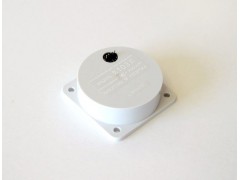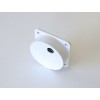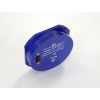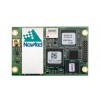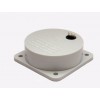Via additional contact it provides possibility for better modelling and data correction.
Due to the plastichousing the gyro interior is well isolated from variable ambient.
Upgraded assembling brings to the gyro better shock endurance
PHYSICAL PARAMETERS
|
1. |
Ω - sensing axis, 90°± 1° to the reference plane |
|
2. |
Dissipation - 1 W |
|
3. |
Weight - 55 gram ( 80 gram max ) |
|
4. |
Volume - 0.07 litre |
|
5. |
Housing material - plastic |
|
6. |
Tolerances per ISO 2768-m |
|
7. |
Ingress protection class - IP67 |
MAIN PARAMETERS ( typical values )
♦ Rate range 300 deg/s
Scale Factor (SF) 6 mV/deg/s
Frequency range 0... 1 kHz
Angle random walk 0.02 deg /√ h
Bias stability, RMS 3 deg/h
SF stability, RMS 0.1 %
Readiness time 0.02 s
ENVIRONMENT
♦♦♦ Temperature operating -40°C ... +70°C
♦♦♦♦ Temperature endurance -55°C... +85°C
Vibration, RMS 18g, 20Hz...2kHz
Shocks 350g, 1 ms
Acceleration 5g
♦♦ RELIABILITY
MTBF 60000 hours (20° С, predicted)
Lifetime (predicted) 15 years
♦ Precision class - 4
♦♦ Estimated for low humidity
♦♦♦ Operating temperature - temperature of built-in temperature sensor
♦♦♦♦ Endurance temperature - environment temperature. Sensor is turned off.
RECOMMENDATIONS AND PRECAUTIONS
|
1. |
Do not deform housing |
|
2. |
Fragile components inside - no shocks, no drop |
|
3. |
It is recommended to use 2 diagonal screws with elastic washers for mounting |
|
4. |
Treat as electrostatic sensitive unit |
|
5. |
Is designed to be mounted inside water protected equipment |
|
6. |
Increased humidity shortens essentially lifetime |
|
7. |
Power must be off during connecting |
|
8. |
Soldering to contacts - by low-temperature solder |

